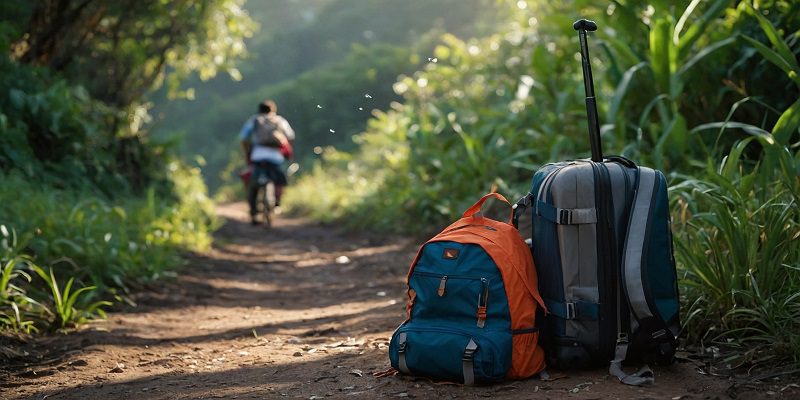How Material Science Is Revolutionizing Outdoor Equipment

People who do adventurous outdoor activities like climbing, hiking, and extreme sports always seek more thrilling experiences. As they push themselves further, they need better gear that is lighter, stronger, and more versatile to keep them safe and help them perform at their best.
Improvements in materials science are creating revolutionary new adventure gear using cutting-edge materials. These innovations allow us to go further in our outdoor pursuits while reducing risks.
Material science is about turning ideas into real products. However, developing new materials was very slow and expensive in the past because thousands of options had to be tested.
Nowadays, we’re in the middle of a materials revolution. Scientists use powerful computer simulations and machine learning to speed up innovation and discover new possibilities faster. Over the next ten years, advances in materials will have a huge impact across many industries.
New materials disrupt nearly every industry, from lightweight plastics to incredibly small semiconductor structures. This blog explores the key trends driving rapid progress in materials and how manufacturers are adapting.
The importance of outdoor gear for adventure sports
Adventure sports push our bodies and minds to the max. But we need special outdoor gear to handle many tough conditions, stay safe, and perform well. Let’s look at some of the big challenges that companies face when making this kind of adventure gear:
1. Toughness
Imagine climbing a rocky mountain in a snowstorm or a bumpy bike trail. Your gear needs to be strong and long-lasting. That means using top-quality, rugged materials that can stand up to scrapes and bangs from sharp rocks and loose gravel, as well as falls and tumbles, without ripping, tearing, or getting damaged easily.
The fabrics must also work well in extreme temperatures, from super hot deserts to freezing mountain tops, without getting messed up. For example, let’s say you were going indoor skydiving in Singapore, and then you’d need to ensure the protective equipment and apparatus are safe and durable.
2. Lightweight design
Every bit of weight matters when carrying a heavy backpack for long distances or fighting strong water currents. Gear should be as light as possible without sacrificing its toughness. This can happen using fancy new synthetic fabrics and lightweight metals that offer amazing strength for how little they weigh.
Keeping designs simple by removing unnecessary extras can also make gear much lighter without losing its usefulness. And having one piece of equipment that can do multiple jobs means you need to carry less overall.
3. Breathability and comfort
Adventure sports make you sweat a lot, like going in ghost hunting after dark. A gear letting air flow through well is important for managing sweat. It pulls moisture away from your body, which stops you from getting uncomfortable, cold, and chafed.
Breathable fabrics also help with temperature control, keeping your body at a comfy temperature, which is key for doing your best and staying safe. And they help control odor by preventing sweat from stinking you up so you stay feeling fresh.
4. Safety
Adventure sports can be risky. Gear plays a huge role in keeping you safe by protecting helmets, pads, and body armor that shield you from falls and hits. It enhances visibility with reflective bits and bright colors, making seeing you in low-light conditions easier.
Emergency readiness features built into some gear, like whistles or emergency shelters, could save your life if something goes wrong in an unforeseen situation.
Innovative materials transforming outdoor gear
When traveling, whether in Singapore or anywhere else or simply engaging in outdoor adventures, having the right gear can significantly impact your experience and safety. Here are some cool innovations and how they’re improving the equipment used for outdoor adventures:
Ultra-light fabric
You don’t need to carry heavy, bulky backpacks and tents anymore. These days, we have super cool fabrics like:
- Dyneema®: This new super-strong yet lightweight plastic fiber is amazing. It’s used in tents, backpacks, and shelters, making them lighter without sacrificing toughness. Can you imagine a tent weighing less than your sleeping bag?
- Advanced ripstop nylon: This improved nylon has a reinforced grid pattern that makes it extremely resistant to rips and punctures, which is perfect for backpacks and clothing that will face rough terrain.
Performance membranes
Staying dry and comfortable in harsh weather is so important. That’s where special membranes come in:
- Gore-tex®: This top waterproof and breathable membrane lets sweat vapor escape while blocking rain and snow from getting in. It’s used in jackets, pants, and shoes, helping manage moisture and protecting from the elements.
- Wicking fabrics: New technology has created fabrics that are awesome at pulling sweat away from your body, keeping you dry and comfy during tough activities.
Composite materials
Composite materials are changing the game by being super lightweight yet high-performance:
- Carbon fiber: This material is insanely strong for how little it weighs. It’s used in trekking poles, skis, and snowboards, providing exceptional stiffness for optimal performance without extra weight.
- Impact-resistant materials: Tough stuff like Kevlar® offers crucial protection in helmets and other gear. Its lightweight yet incredibly strong properties absorb impacts well, keeping you safe.
Smart materials
The future of outdoor gear is full of exciting, mind-blowing possibilities:
- Shape-memory alloys: Imagine clothes that adjust to your body temperature or gear that adapts to different terrains! These special metal alloys can change shape and could revolutionize how our gear interacts with us.
- Solar-powered fabrics: Early solar-powered fabrics could let you charge devices on the go. Picture a backpack that charges your headlamp while hiking or a tent powering your phone on a multi-day trip!
How material science is making outdoor gear safer and more eco-friendly
Outdoor gear is getting better because of new materials that scientists are creating. These new materials help keep adventurers safe and also protect the environment.
For safety, scientists are working on:
- Nanoparticle coatings make clothes waterproof but still lightweight and breathable.
- Aerogels are super lightweight insulators to keep you warm but they must be stronger.
For the environment, companies are using:
- Recycled plastic bottles and fishing nets to make backpacks and jackets instead of new plastic.
- Materials like PrimaLoft Bio are made from recycled stuff and can biodegrade when you’re done using them.
- Like cotton, fabrics from trees like eucalyptus absorb moisture well but are grown sustainably.
Summing up
Thanks to smart scientists working hard, outdoor gear is getting way better. They’re making new, strong, lightweight materials to keep you safe and dry. And they’re also creating eco-friendly stuff that’s good for the planet. With all these awesome improvements using cool new materials, you can enjoy whatever adventure you want, anytime, anywhere.





